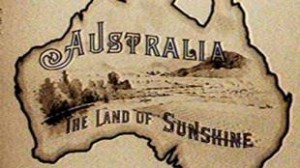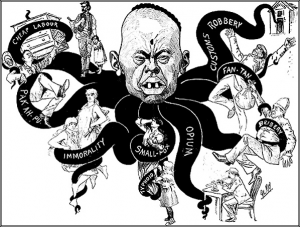I remember choosing this studio because of Liam’s pitch last year when he said that, only people who feel passionate about an issue, who are angry about something in the world should apply. And that intrigued me. While I am not necessarily the biggest fan of non-fiction, I’ve known for a while that I need to become one if I want to be a good writer. I did not however know if I was quite angry enough to be the type of person that Liam wanted for his studio. It turns out I needn’t have worried. This semester I have stuck to my guns, created political, poetic and socially conscious documentaries that I’m very proud of, all while skirting a line every documentary maker doesn’t want to cross, especially when it comes to the construction side of a found footage political and poetic documentary – the line of sensationalism vs. poignancy to get your point across. I constantly danced back and forth over this line, and knew that, even though my passion for these subjects constantly drove me forward to pursue the, ‘poetic justice’ of sorts, they deserved, it could drive me over that line, using the subjects to exaggerate the issue to the pointless alienation of the audience, instead of getting the point across effectively. Knowing where that line is, is important for any poetic film-maker.
Here are the links to my three written assignments. You can see from reading each one how I grew in my knowledge and understanding not only of documentary convention, but just how poetic documentaries fit into the medium, when they break almost every convention, or at least seek to.
Assignment one post: https://www.mediafactory.org.au/alaine-thompson/2016/03/10/the-art-of-persuasion-a-whole-new-studio/
Assignment two post: https://www.mediafactory.org.au/alaine-thompson/2016/03/30/what-is-wrong-with-simply-observing-the-world/
Assignment four reflection post: https://www.mediafactory.org.au/alaine-thompson/2016/06/03/the-final-answer-to-the-unanswerable-question-how-do-we-make-documentary-that-is-both-political-and-poetic/
I didn’t just learn a great deal from the great academic writers and film-makers we read and watched films from. I also learnt a great deal from the production process, continuosly pitching and adjusting the direction of the film to meet with these shifts. Being constantly ready to adapt to any situation is key to documentary making, as it is all happening in current time.
Progress report from project brief three examples:
1. https://www.mediafactory.org.au/alaine-thompson/2016/03/09/group-project-update-week-1/
2. https://www.mediafactory.org.au/alaine-thompson/2016/03/31/group-project-update-week-4/
3. https://www.mediafactory.org.au/alaine-thompson/2016/04/14/group-update-week-6/
Another key thing I’ve learnt from this whole process, of producing both brief three and four, is how to work collaboratively and creatively in a team, which is vital to any creative project.
Progress report from project brief four examples:
1. https://www.mediafactory.org.au/alaine-thompson/2016/04/28/brief-4-a-new-hope/
2. https://www.mediafactory.org.au/alaine-thompson/2016/06/02/hollywood-vs-women-week-5/
Link to all of my other posts from The Art of Persuasion studio: https://www.mediafactory.org.au/alaine-thompson/category/art-of-persuasion/








